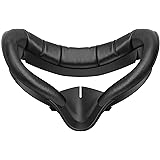Ever wondered if a single laptop could truly deliver uncompromising performance for both competitive gaming and high-resolution creative work? In the accompanying video, the Razer Blade 18 makes a compelling case, showcasing a laptop that aims to redefine portable power. While the video offers a fantastic first look at this powerhouse, let’s dive deeper into what makes the Razer Blade 18 a standout contender in the premium gaming laptop arena, dissecting its innovative features and real-world implications.
Unboxing the Razer Blade 18: First Impressions
Upon initial inspection, the Razer Blade 18 immediately signals its premium status. The eco-friendly packaging, a thoughtful touch, hints at a brand trying to evolve beyond its past. However, the tradition of including Razer stickers, a nostalgic detail the video highlights, provides a small but welcome nod to loyal fans, standing in stark contrast to other high-end manufacturers.
The sheer physical presence of the laptop is undeniable. It’s a massive machine, an 18-inch behemoth that pushes the boundaries of portability. The accompanying 400-watt power brick, necessary for simultaneously charging and driving high-end components, further underscores its desktop-replacement aspirations. While proprietary power connectors are often a point of contention, the immense power requirements make it a pragmatic choice here, as 400 watts simply isn’t feasible through a standard USB-C connection.
Powerhouse Performance: Core Specs and Cooling
The RTX 5090 Mobile and Core Ultra 9 Combination
At the heart of the Razer Blade 18 lies a formidable duo: an RTX 5090 mobile GPU and a Core Ultra 9 CPU. This configuration is engineered for peak performance, allowing the GPU to draw a remarkable 175 watts of total power. Simultaneously, the Core Ultra 9 CPU is allocated a generous 105 watts, ensuring that neither component is significantly throttled. This balanced power distribution is critical for demanding applications and games, preventing bottlenecks that can plague other high-performance laptops.
Despite Razer’s claim of up to 5.4 GHz for the CPU, real-world testing in the video observed frequencies peaking around 5.2 GHz. While slightly below advertised, 5.2 GHz remains an exceptionally fast clock speed for a mobile chip. This ensures the Razer Blade 18 can handle intense computational tasks, from complex game physics to video rendering, with remarkable efficiency.
Advanced Vapor Chamber Cooling
Driving such powerful components necessitates an equally robust cooling solution. The Razer Blade 18 employs what Razer claims is their largest vapor chamber design to date. This advanced cooling system is designed to dissipate heat more effectively than traditional heat pipes, allowing the GPU and CPU to sustain higher clock speeds for longer durations. The inclusion of a visible window on the bottom of the chassis, allowing a peek at this engineering marvel, highlights Razer’s confidence in their thermal management.
The massive fans within the chassis also contribute significantly to cooling efficiency, working in tandem with the vapor chamber. This comprehensive thermal design enables the laptop to be “overclock ready,” meaning it has headroom for users who wish to push its performance even further, a notable feature in a market often constrained by thermal limits.
The Groundbreaking Dual-Mode Display
Unveiling the 4K+ 240Hz and FHD+ 440Hz Experience
Perhaps the most revolutionary feature of the Razer Blade 18 is its world-first dual-mode display. Users can choose between two distinct modes, each catering to different needs. The first option offers a stunning 4K+ resolution (3840×2400) at a fluid 240Hz refresh rate, ideal for immersive single-player games, content creation, and everyday productivity with crisp visuals. In contrast, the second mode drops the resolution to Full HD+ (1920×1200) but ramps up the refresh rate to an astounding 440Hz. This mode is a dream for competitive esports players, providing an unparalleled advantage in fast-paced titles where every millisecond counts.
The 16×10 aspect ratio, a personal favorite of the presenter, adds valuable vertical screen real estate. This makes the display not only excellent for gaming but also highly productive for tasks like coding or browsing, reducing the need for constant scrolling. Switching between these modes requires a full system reboot via Razer Synapse, which, while a minor inconvenience, ensures optimal performance for the chosen display configuration.
Display Accuracy and Real-World Brightness
Beyond refresh rates and resolutions, the display’s quality is crucial for a premium laptop. The Razer Blade 18’s IPS panel offers around 550 nits of peak brightness in SDR mode, making it respectable enough for outdoor use, though it lacks local dimming for true HDR. Color accuracy, an essential factor for graphic designers and video editors, shows an average DeltaE under two in its best mode, indicating accurate color reproduction, which is generally considered excellent.
However, the display does exhibit a slight blue cast, and grayscale tracking isn’t perfect, potentially affecting shadow detail and highlight consistency. While Razer advertises 100% DCI-P3 gamut coverage, testing revealed a still impressive 97%. This slight discrepancy, though within Razer’s expectations, highlights the importance of real-world testing over marketing claims. Despite these minor imperfections, for an 18-inch high-performance gaming laptop, the display delivers a high-quality visual experience.
Connectivity and Ergonomics: More Than Just Speed
Comprehensive I/O for Every Need
A high-performance machine like the Razer Blade 18 demands extensive connectivity. On the left side, it features a power inlet, 2.5 Gigabit Ethernet for ultra-fast wired networking, two USB 3 Type-A ports, and a USB port which, while unlabeled, is likely a Thunderbolt 5 port given the laptop’s high-end status. A 3.5mm audio jack ensures compatibility with a wide range of headsets.
The right side includes a Kensington lock slot for security, an HDMI port for external displays, another USB Type-A port, and a UHS-II SD card reader, invaluable for photographers and videographers. This comprehensive array of ports, including multiple USB-A and Thunderbolt options, provides ample flexibility for peripherals, external storage, and additional displays, enhancing the Razer Blade 18’s utility beyond just gaming.
The Redesigned Keyboard and Trackpad
User comfort is paramount for a laptop designed for extended use. Razer has redesigned the keyboard on the Blade 18, focusing on longer key travel for a more satisfying and tactile typing experience. This improvement significantly enhances usability for both gaming and productivity tasks. A particularly innovative feature is the dual LED backlighting behind some keys; holding function, shift, or control instantly illuminates the key’s alternate function, a clever solution for complex shortcuts.
The trackpad is impressively large and, according to lab tests, boasts excellent palm rejection. This is a critical feature for gamers and typists alike, preventing accidental cursor movements while typing or in intense gaming sessions. While Windows trackpads historically lagged behind Mac counterparts, the Blade 18’s trackpad continues the trend of improved responsiveness and accuracy, offering a solid, haptic-free clicking experience.
Unprecedented Modularity and Repairability
Upgradeable Storage and RAM Options
In an era where many thin and light laptops sacrifice upgradeability for form factor, the Razer Blade 18 offers a refreshing degree of modularity. While the reviewed unit came with a substantial 4 terabytes of built-in storage, lower-spec 1TB and 2TB versions wisely include a free M.2 slot. This allows users to easily expand their storage, potentially adding up to an 8TB drive in the second slot, offering incredible flexibility for game libraries and large project files.
Beyond storage, the laptop features replaceable SODIMM memory. It ships with 5600 megatransfer per second RAM, but it can support up to 6400 MT/s with 64GB or 5600 MT/s with 96GB, offering significant headroom for future upgrades. Even the Wi-Fi module is replaceable, offering future-proofing despite already featuring the latest Wi-Fi 7 standard. This level of user-serviceability, a rarity in premium laptops, significantly extends the lifespan and value of the Razer Blade 18.
Real-World Gaming Performance and Audio-Visuals
Benchmarking the Razer Blade 18 in Action
The true test of any high-performance gaming laptop is its ability to deliver in demanding titles. When compared to a similarly specced HP machine, the Razer Blade 18 performed as expected in CPU-bound games, matching its competitor. However, in GPU-bound scenarios, Razer’s superior cooling solution truly shone. The Blade 18 outperformed the comparable laptop by up to 10% at 1200p in certain titles, demonstrating the tangible benefits of its robust vapor chamber design. This extra thermal headroom translates directly into higher sustained frame rates and a more consistent gaming experience.
Testing in Cyberpunk 2077 with ray tracing on, a notoriously demanding game, revealed that gaming at native 4K+ resolution pushed the mobile GPU to its limits, requiring DLSS to maintain playable frame rates. However, dropping to 2560×1600 resolution yielded excellent results, with the Razer Blade 18 delivering over 60 FPS, even with ray tracing enabled. While 1% lows occasionally dipped slightly below 55 FPS, these frame rates are highly acceptable for such a graphically intensive game on a “technically mobile” device, solidifying its status as a top-tier gaming laptop.
Immersive Audio and Webcam Clarity
The audio experience on the Razer Blade 18 is surprisingly robust. With speaker grills strategically placed on the bottom and front, it creates an impressive and immersive soundstage. While the bass can fall a little short during heavy drops, the overall loudness and clarity are commendable, making for an enjoyable multimedia and gaming experience without external speakers.
For communication, the laptop features a 5-megapixel webcam, delivering fine image quality for video calls and streaming. It also includes a hardware privacy switch for added security and an IR tracker for Windows Hello, offering convenient and secure biometric login. These features contribute to a well-rounded multimedia and productivity package, rounding out the Razer Blade 18’s impressive capabilities.
Is the Razer Blade 18 Worth the Premium Price Tag?
The Razer Blade 18, particularly the configuration reviewed, commands a price tag upwards of $5,000 USD, with base models starting at over $3,000. This is a significant investment, firmly placing it in the ultra-premium segment of the market. Its price demands justification through its cutting-edge features, such as the dual-mode display, top-tier RTX 5090 (as stated by speaker) graphics, robust cooling, and exceptional upgradeability. For professional gamers, content creators, or tech enthusiasts who demand the absolute best in mobile performance and are willing to pay a premium for it, the Razer Blade 18 offers a compelling package. However, for those with more modest budgets, the substantial cost of entry will undoubtedly be a primary consideration. Despite the price, the sheer innovation and performance packed into the Razer Blade 18 make it a noteworthy contender for anyone seeking an uncompromising gaming laptop experience.









